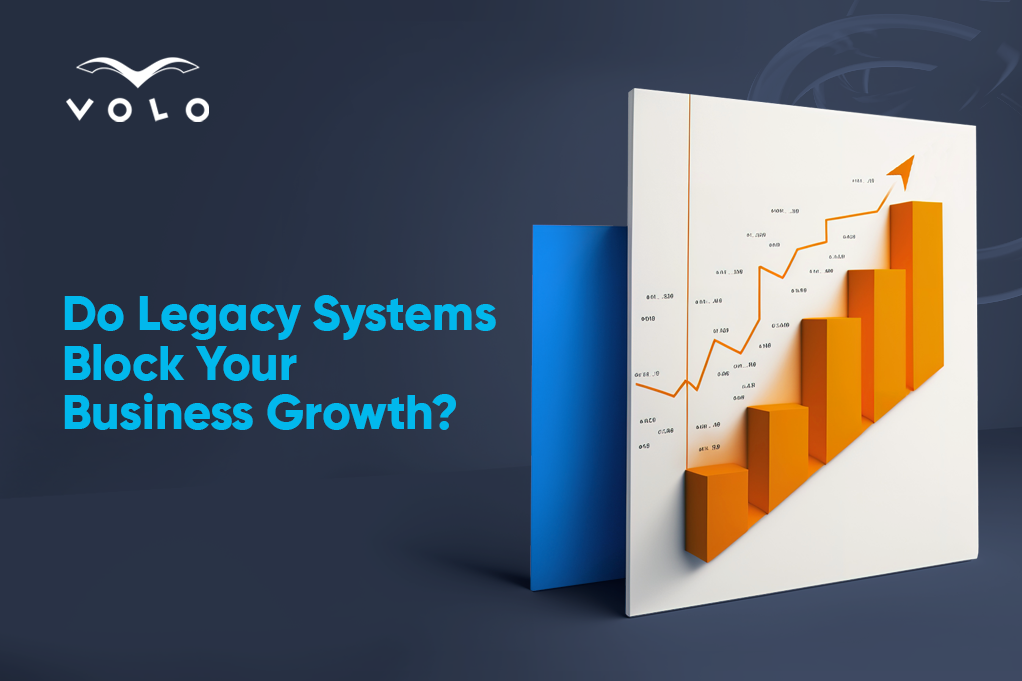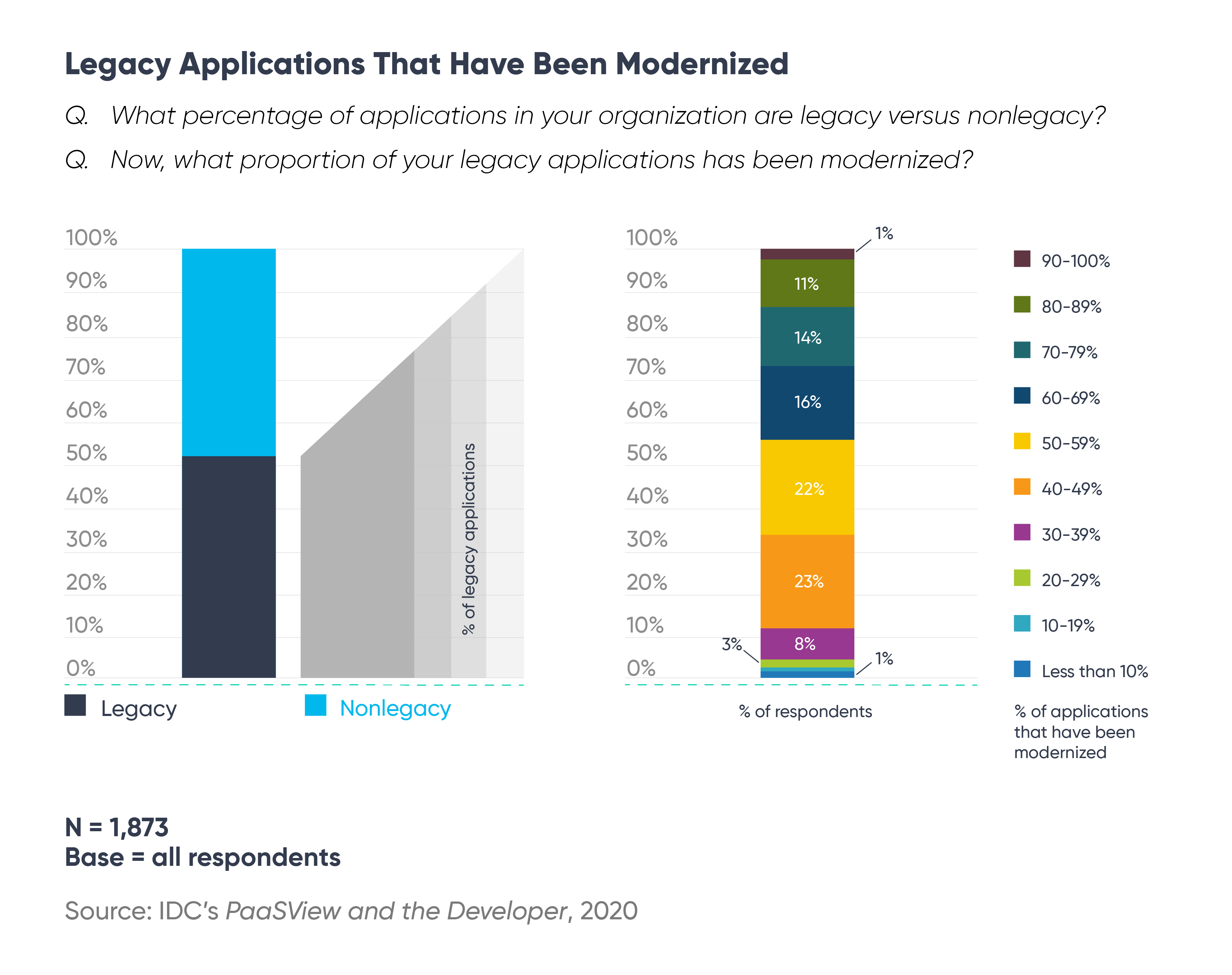
Do Legacy Systems Block Your Business Growth?
24 Jan 2024

“If it ain’t broke, don’t fix it.” For decades we have grown comfortable using whatever system was in place. As technology, and its application, has been rapidly advancing, we are seeing aging software that is no longer viable. Many organizations find themselves tethered to outdated technology – their legacy systems in business. As defined by Gartner, legacy software is an information system that may be based on outdated technologies, but is critical to day-to-day operations.
These legacy business systems, once the backbone of operations, are now acting as barriers to growth, hindering innovation and imposing significant costs. In this blog post, we'll explore why legacy business systems are holding back growth and how legacy system migration trends are paving the way for a brighter, more agile future.
If you think you rely too heavily on legacy software, you aren’t alone. According to the 2020 IDC Study about legacy application modernization, 52% of technology used by enterprises are legacy systems, of which the majority are not modernized. That means the vast majority of enterprises have one aspect of their business that is going to be hindered by legacy systems.

How Do Legacy Systems in Business Block Growth?
We have established that many businesses have legacy software, but how does it block business growth? Legacy systems in your business are costly on your budget, weigh down your workflow, and pose larger risks.
We can measure the financial burden of legacy software as technical debt. Technical debt refers to the costs of code being written quickly to be launched earlier but updated later vs spending more time to write quality code. Sticking with outdated software that requires constant upgrades increases your technical debt.
Inflexibility
Legacy systems in businesses are notorious for their rigidity. Changes and updates become cumbersome, hindering the ability to adapt to market trends swiftly. The lack of flexibility can hold back product development, integrations, and overall business agility. It is only a matter of time before a really old legacy system of your business can become completely obsolete and require legacy system migration.
Skill Shortage
IT specialists and developers do not just care about salary. They want to work for companies that use dependable platforms they can keep working on. Attracting qualified personnel to maintain outdated systems becomes challenging and expensive.
Security Risks
There is no shortage of attacks on systems due to legacy systems in businesses. They are susceptible to breaches that can compromise sensitive data. In an era where data privacy is paramount, the security risks associated with legacy systems cannot be ignored. All it takes is one faulty pillar to send the whole infrastructure down.
Lack of Innovation
Legacy systems in business hold back creativity and innovation by limiting the integration of new technologies. This obstructs the development of forward-thinking solutions that limits your team to what they can do, not what they want to.
Lack of Data
Harvesting data is not enough if you don’t have the tools to properly analyze it and reap the benefits. Your legacy business software may be taking up valuable resources from your data analysts. In fact, according to the IDC Data Analytics study, data workers spend 27% of their time in spreadsheets repeating the same or similar activity steps every time a data source has been updated or refreshed. That is about 7 hours a week spent doing tasks that could have been automated already.

Legacy System Migration: Is It Worth It?
IDC’s research shows that 80% of decision makers worldwide recognize that digital infrastructure is important or mission critical to enabling the achievement of business goals. Interest in legacy system migration is just the first step.
Do I Migrate All of My Legacy Systems at Once?
In the same IDC study, only 1% of legacy applications had over 90% of its code refactored. Modernization should be understood as a phased, gradual, and iterative process, not a complete overhaul. Migrating legacy systems is an important investment, but still requires ample time and resources to successfully implement.
Think of this as a strategy, not a one time solution. The best way to decide what roadmap to draw up is to seek consulting for legacy system migration from a professional team.
Evaluating Legacy Business Systems
Legacy system migration may come off as a dramatic solution at first, especially if things seem to be running fine. But in an ever digitizing world, you need to always have a plan to update your entire legacy business systems just to stay afloat.
There are different approaches and mindsets to apply when considering how to strategize your legacy business systems outside of migration. Read about the 7 different strategies for modernizing your business applications to learn more about bringing your business to the digital era.
Legacy System Migration Trends
Tech strategies have shifted rapidly in the past few years and it is important to look at the entire market. IDC’s Futurescape Digital Infrastructure 2023 Predictions state that by 2027, AI-enabled automation will ensure consistent digital infrastructure configuration, performance, cost, and security by reducing the need for human operations intervention by 70% and improving SLOs. That means more businesses are predicted to replace their legacy business system with AI friendly solutions that can greatly reduce workload for employees.
Whatever new technologies become more effective in the future, it will still be important to be flexible and agile enough to be able to incorporate them into your business.
Parting Thoughts
If it always feels like software needs more updates, it’s because it does. As legacy systems in business age, they will be burdened with the rising demands of business. It is not a matter of if you will have to update or migrate your legacy system for your business, but how and when. Legacy business systems are a burden on your budget, innovation, and workflow.
The best way to gauge what your best options are is to talk to a professional team that has experience in legacy systems for business. They can use their experience in managing other legacy systems to determine what the best solutions are for your specific business.
More helpful resources:
- Guide for Digital Transformation Professional Services
- What's Driving App Modernization?
- 7 Strategies for Modernizing Your Business Apps
- VOLO's Approach to Legacy Transformation
- Updating Your Legacy Software: Everything You Need to Know




